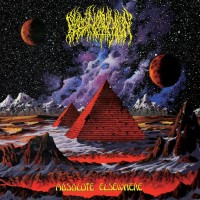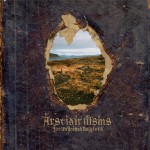Árstíðir Lífsins - Jötunheima Dolgferð review
| Band: | Árstíðir Lífsins |
| Album: | Jötunheima Dolgferð |
| Style: | Black metal, Folk metal |
| Release date: | October 08, 2010 |
| A review by: | Darkside Momo |
01. Ísa Brots Blómin Milli Hnignunar Marnars Barna
02. Morgunn Í Grárri Vindhjálmars Boku Við Berufjörð
03. Velkomin Í Lífið, Ávarpar Maðr Sjálfan Sig
04. Haka Kleifir Berja Ok Brjóta Við Enda Langrar Ferðar Sinnar
05. Lifðu Með Öðrum, Með Bínum Eigin
06. Eigi Hefr Á Augu, Unnskíðs Komit Síðan
07. Margt Breytist Fyrir Orð Völvanna
08. Við Fundum Nýtt Heimili, Langt Burtu Í Vestrinu
09. Pat Er Stormr Ok Bláköld Vatnssmíðin Litar Regna Borg
Out of the cold and distant shores of Iceland comes Árstíðir Lífsins ('the seasons of life') who, under the direction of lead skald Stefán (from Germany), recorded this Jötunheima Dolgferð (which can be loosely translated as "the rogue's path to Jotunheim). It depicts "life in the days of Iceland's settlement, which is presented with all its social and ecological difficulties and not in the misty-eyed way of the Romantic and Victorian Age."
Or so I'm told, as I don't understand Icelandic at all.
What it is all about?
Take some black metal roots - think about something around Primordial - and them add folk textures and instrumentations (violins, flutes, etc), ambient parts, clean singing, a few ethereal female vocals, spoken words, samples of natural sounds (gulls and waves and others). Granted, just piling it up does not do this album justice; at least you get a glimpse of it.
But the main word to describe this album is certainly storytelling. The long-winded songs, with all their meandering and their acoustic and/or ambient interludes, do have a real cinematic feel to them. And the use of Icelandic, being so close to the heart of the matter, does add a lot to the atmosphere. It sounds so true and lifelike at times?
So it's interesting? Sure. But flawless ? No. The black parts can be pretty furious (like at the beginning of "Haka Kleifir Berja Ok Brjóta Við Enda Langrar Ferðar Sinnar" - thanks copypasting), but some of the 'black high-pitched shrieks' are singularly weak and lame - not to the point of ruining the songs, thought.
Also? It's not really a flaw, but there are no real, memorable songs on this album. Quiet a few great moments, yes, but no real songs, only tracks that are parts of the story. Along the same line of thinking, the exclusive use of Icelandic can be frustrating for all of us who don't understand it. Well, anyway, one can at least be swept by the grandiose majesty of it all.
And then there is "Eigi Hefr Á Augu, Unnskíðs Komit Síðan". Search across the web, it's mentioned almost everywhere. Is it that terrible, to be worth citing over and over? Well, sort of. This a cappela (I wouldn't say 'gregorian') sort of ceremonial singing by a campfire is soothing at first, but almost 7 minutes of it is waaayyy too much. I'm pretty sure it's quite close to historical, real Viking music, but this sure was too long for a metal album. Even this one.
All in all, this album is quite the aural equivalent of an historical Viking movie - bordering on the documentary at times. It's a great musical journey through time and space. So yeah, I'm looking forward to read the booklet, as a translation of the lyrics is supposed to be included - just to know what it's really all about.
Anyway, be sure to check this Jötunheima Dolgferð. I don't know if it'll be to everyone's tastes, but it's sure one of the most original and interesting folk metal releases of 2010.
 | Written on 02.11.2010 by Once your regular Hellfest reporter, now retired. I (strangely enough) listen to a lot of metal. And enjoy good beers, comics, novels and role-playing games. |
Comments
Comments: 2
Visited by: 36 users
| Lokaeda Account deleted |
| Bad English Tage Westerlund |
Hits total: 5820 | This month: 6





